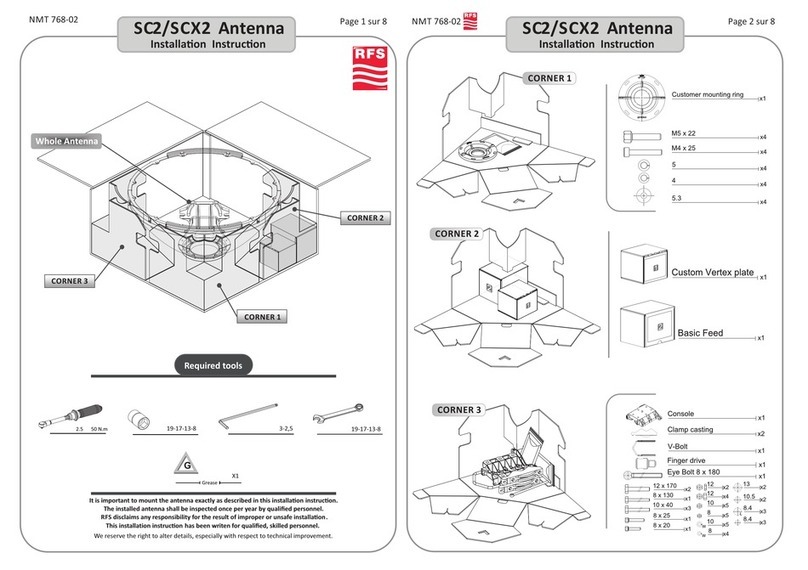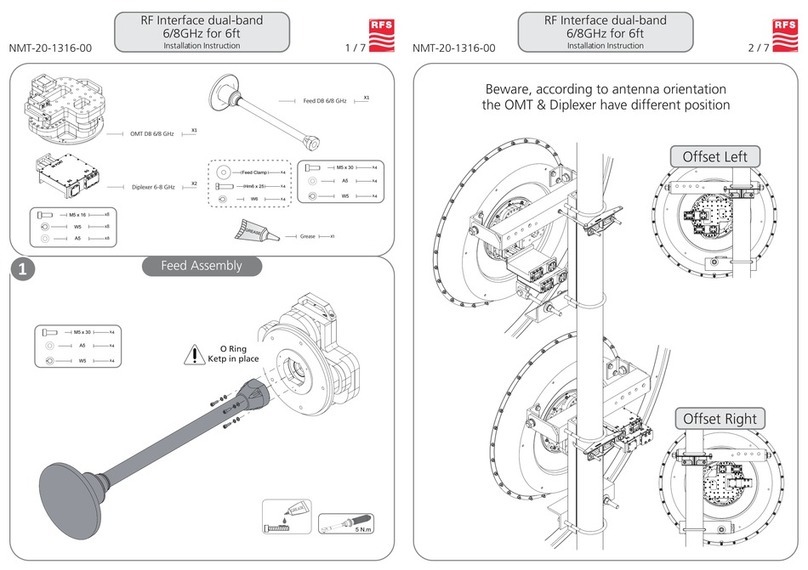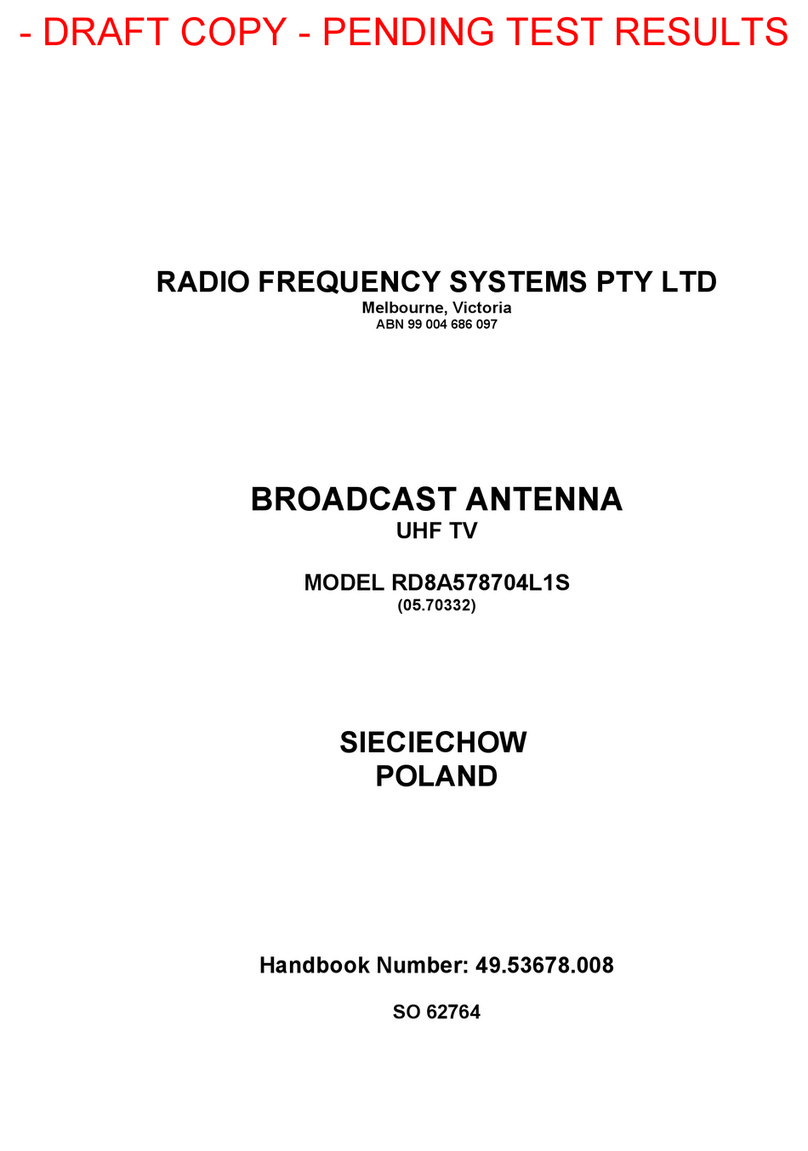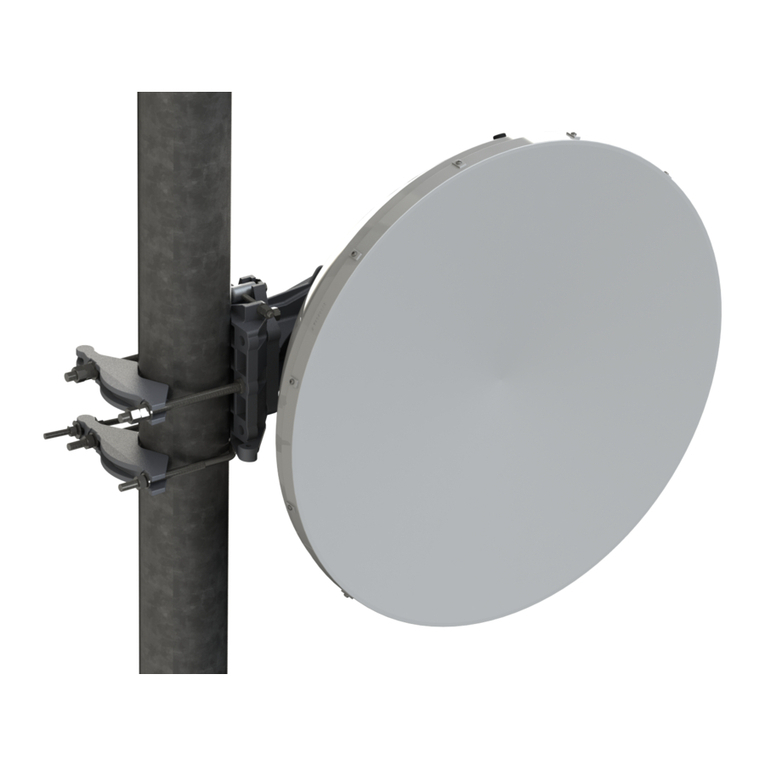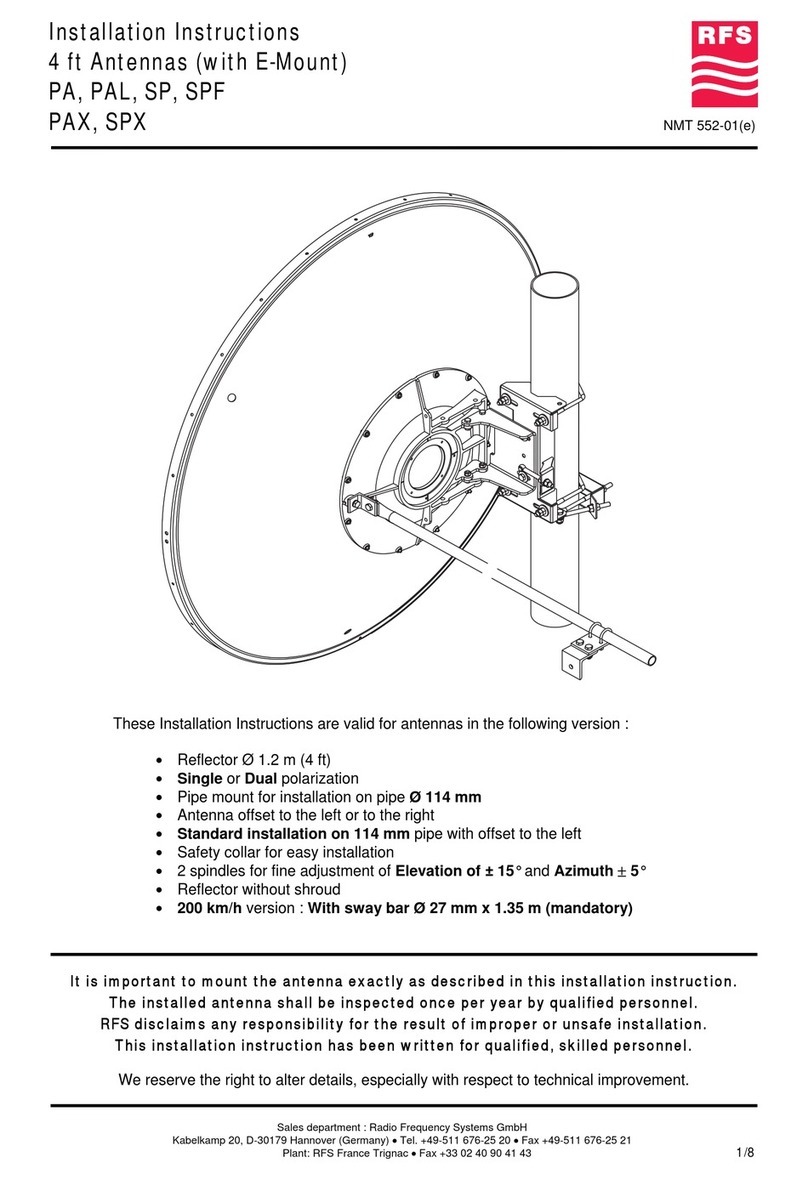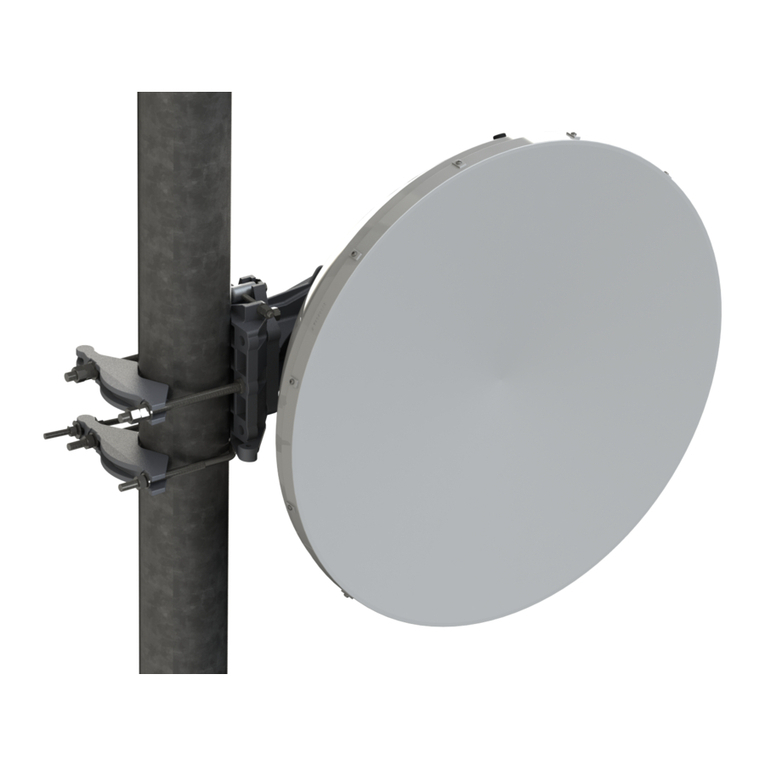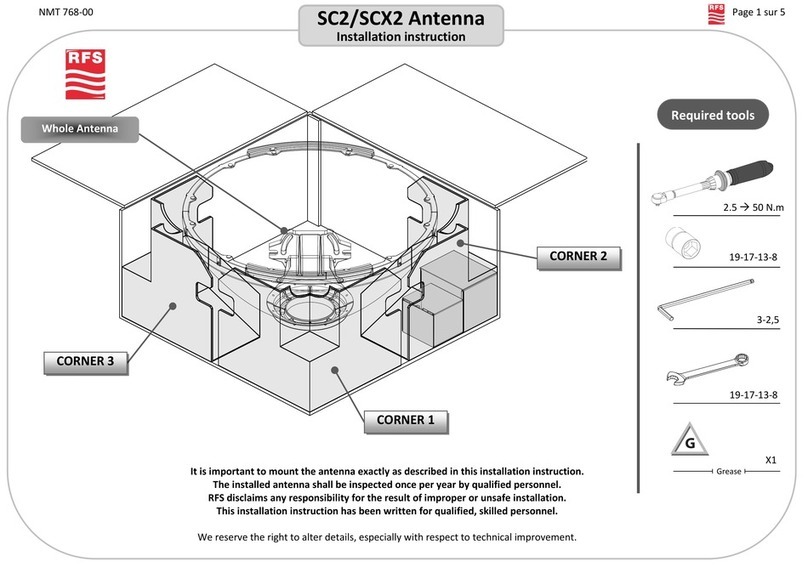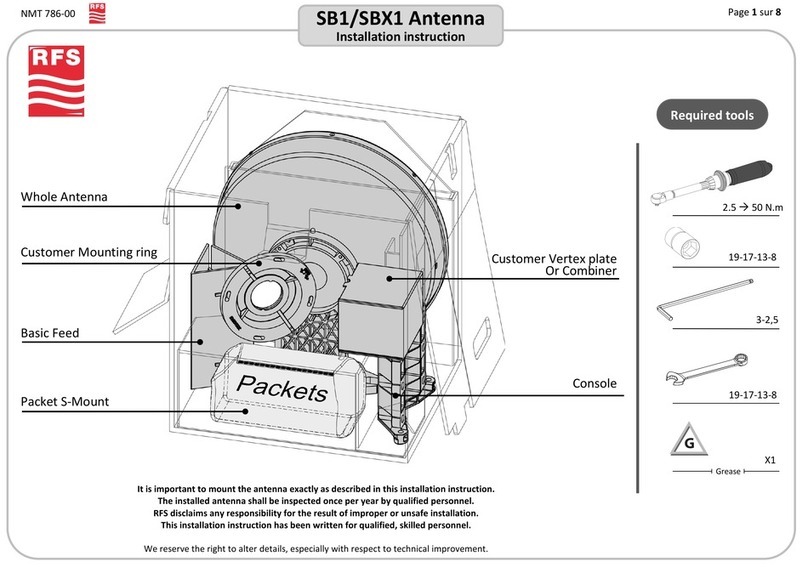
MAINTENANCE GUIDE
Antenna Control Unit Maintenance Guide
10000025991 | Revision 2 | November 2021 | © Radio Frequency Systems 2021 10
3.3.2.2: Loading the Antenna Configuration (ACU) Files to all ACU Devices
This section describes how to upload the antenna configuration (ACU) file to an ACU device:
Please refer to NEM-ALD-W User’s Manual page 28.
o Each RET unit requires an ACU file.
o Calibration is required for each RET after loading a new ACU file.
3.3.2.3: Loading the Antenna Firmware File to all ACU Devices
This section describes how to upload the antenna firmware file to an ACU device:
Please refer to NEM-ALD-W User’s Manual page 22 - 23.
o After the download, the software version changes to the target version.
3.3.2.4: Loading the Antenna CFG & SHA Files to a site-sharing ACU Device
This section describes how to upload the configuration and sharing files to a site-sharing ACU device:
Please refer to NEM-ALD-W User’s Manual page 22 - 23.
o Calibration is required for each RET after loading a new CFG file.
o The SHA file can be applied to any single RET unit and it will be applied to the entire antenna.
o A Reset is required to apply the new SHA file.
3.3.3: Calibrating the RET
Every time an .acu file or a .cfg file is uploaded to an ACU device or a new ACU is installed, a calibration of the
RET must be done, in order to make the motor to record the station of the hard limits ‘min’ and ‘max’. If a
calibration is not performed, this might lead to an alarm “Motor Jam” if a tilt operation is requested.
Please refer to NEM-ALD-W User’s Manual page 29.
3.3.4: Checking the Tilt Operation
Once the calibration has been done, it remains to check if a tilt operation is able to be ordered:
Please refer to NEM-ALD-W User’s Manual page 29.
4. FAQ
Message: “Motor not calibrated”
Solution:
Attempt to calibrate again the RET,
Enter a tilt value for requesting a tilt change
Message: “Motor Jam”
Solution:
Check if the ACU has the proper antenna configuration file,
Calibrate again the RET with the NEM,
Enter a tilt value for requesting a tilt change
Message: The motor does not work
Solution:
Check if the PC->adaptor->AISG cable is properly connected to the ACU,
Check if the ACU is detected by the ALD,
If nothing is detected, change the ACU device by another one, then retry.












